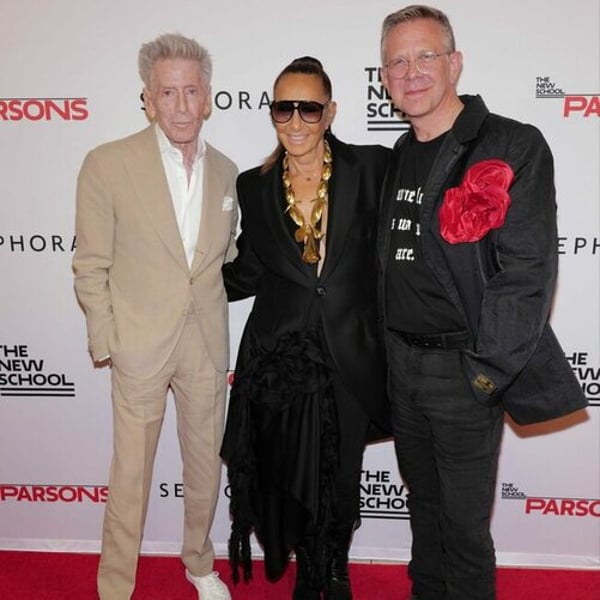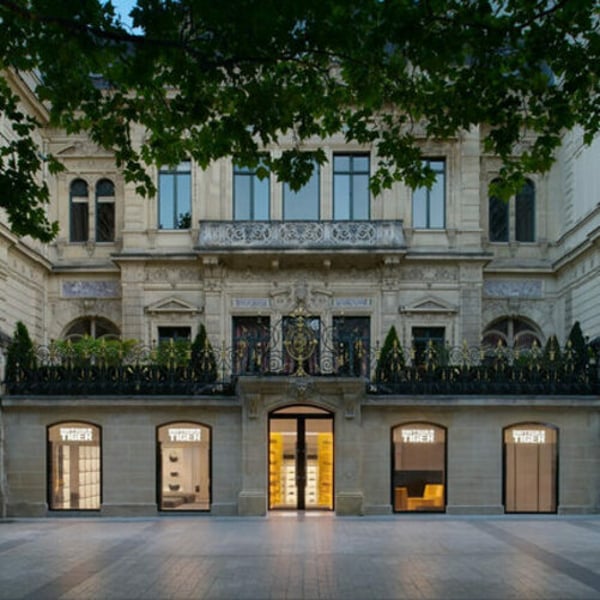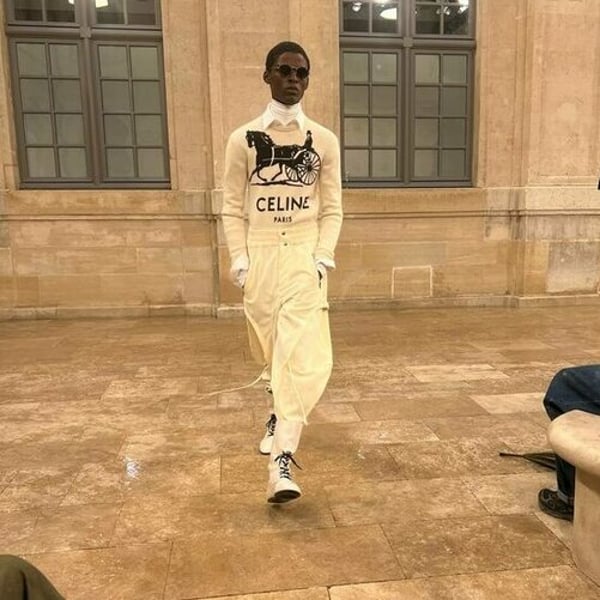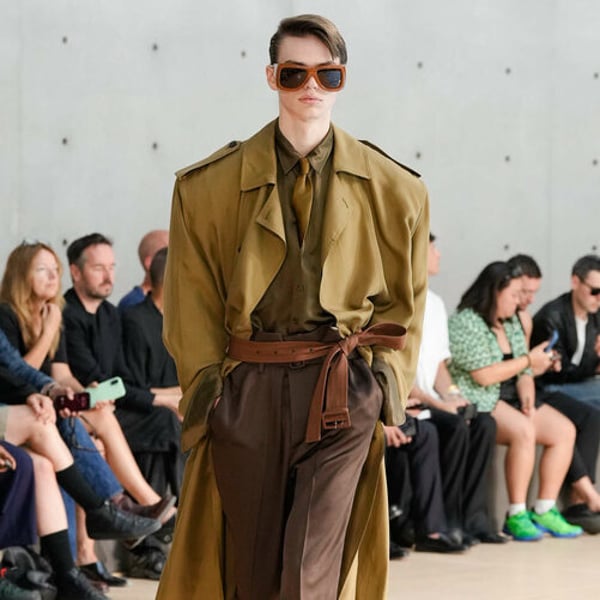In the current quasi-authoritarian state of the US, perhaps no entity has been touched as much as higher education.
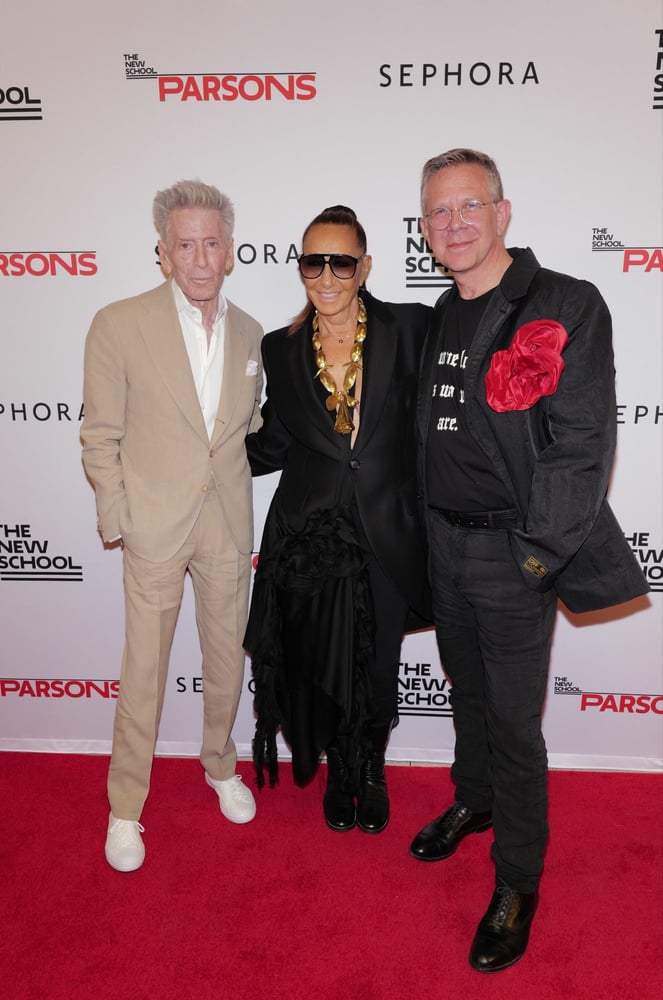
At the 76th annual Parsons Benefit which honored Artemis Patrick, Madelyn Wils, and Willy Chavarria with The Parsons Table Award “recognizing individuals who made a noteworthy impact on the design industry and their influence across fashion, beauty, retail, and more by championing social innovation and creativity”, each recipient echoed in their speeches the need for America’s civil rights and constitution to be fought for and upheld.
The event was led by The New School president, Joel Towers, with master of ceremonies Zanna Roberts Rassi, along with event co-chairs Gena Smith, chief human resources officer, LVMH Inc., and Mazdack Rassi, co-founder of Milk, and held at Halo downtown.
In attendance were several notable alums such as Mara Hoffman, Elena Velez, Jonathan Cohen, and Donna Karan, who brought best buddy Calvin Klein with whom she affectionately chatted at her table. In total, the event raised $1.2 million for the school.
Presented her award by Manhattan Borough President Mark Levine, Fifth Avenue Association president and urban planner Madelyn Wils acknowledged a detour in her typical speech to acknowledge the uncertain times students live in, including an assault on education, journalism, science, and the arts.
“Our next generation of leaders will impact culture, and we’re counting on you to show us your vision and the path you intend to travel down. This is the time to show up and make a difference. Challenge the discourse. Be bold with your ideas and strength of conviction. Over 60 years ago, President John F. Kennedy said, ‘Ask not what your country can do for you. Ask what you can do for your country.’ These words resonate even more today. I look forward to your response to taking up this challenge,” Wils said to the audience.
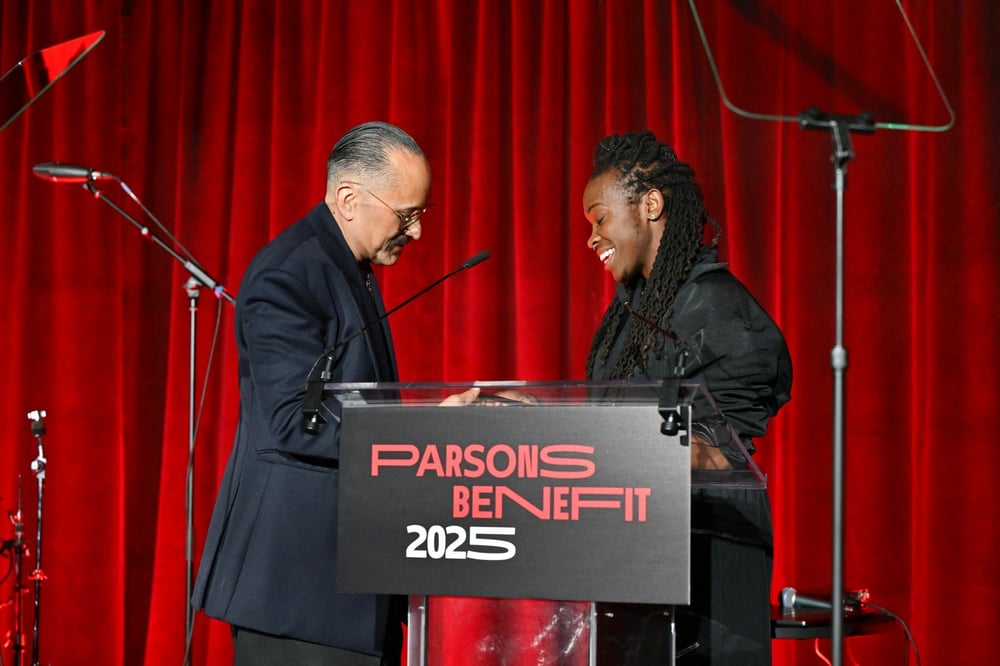
When president and CEO of Sephora North America, Artemis Patrick, received her award from Roberts Rassi, the beauty executive recalled her story of arriving in the U.S. from war-torn Iran as a child without her biological parents and being fostered by an American couple.
“The experience helped me to become a U.S. citizen, to apply to college, and to receive financial aid. My foster mom passed away last year, but my foster dad, who is 93, is still in my life today. Things could have been very different for me. A constant reminder that sometimes we need someone to believe in us, and that’s why we’re here. This is why we are here for every talented student who will lead the next generation of fashion, beauty, and design,” Patrick noted of her own immigration experience. She added that mentors were also key and helped her pursue roles she was initially unsure of, which led to her current career.
Willy Chavarria accepted his award from executive deputy director AJ Hikes of the ACLU, who has been an essential partner for the designer whose mission has always been to lift the unseen and marginalized of society.
Hikes succinctly said in her introduction, “Willy says, when any of us are under attack, we have to protect one another. So tonight we honor not just a designer, but a leader, a truth teller, a builder of culture, a man who has reshaped what fashion can look like, and more importantly, what it can stand for,” said Hikes.
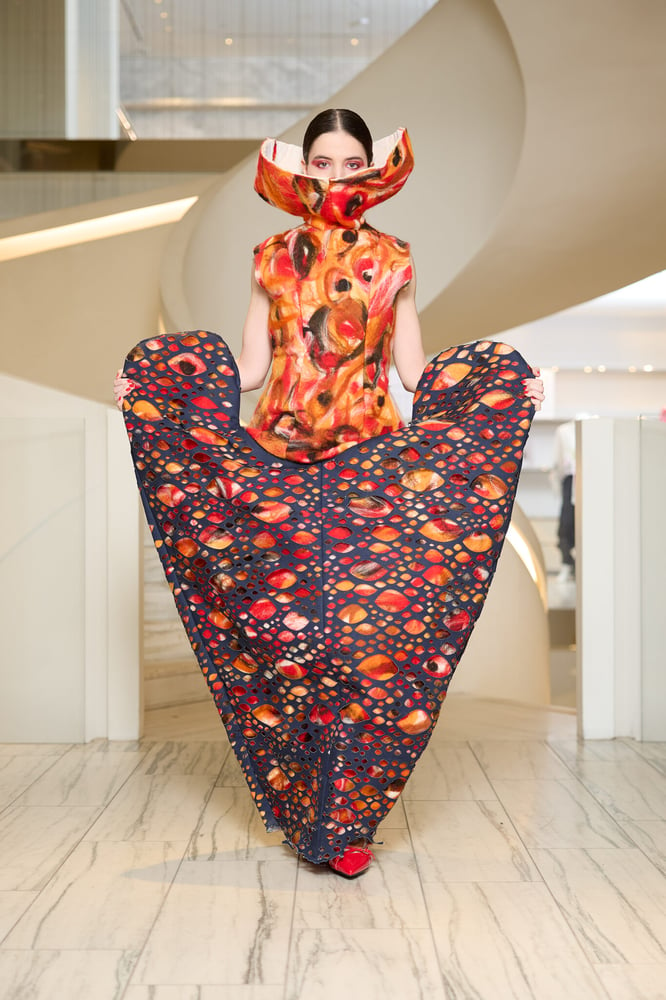
Accepting the award, Chavarria emphasized that the more diverse and inclusive spaces positively affect them and our culture.
“Whether it’s delivered as a whisper, a kiss, a pounding house soundtrack, or a walk, the message is that we are all family and need to get our shit together to take care of one another. It’s not a partisan message. It’s a human message. It’s that simple. We believe in connecting with people as they are and giving them the space to share their beauty so that we can all embrace it,” Chavarria said, adding, “As a family, in art and business, we seek success. But remember that the success of any kind is not about our ambitions, but rather how we do something great together. This applies to any body of work or machine. Each of us in this room has the power to impact what this road will look like in the future through beauty, sound, film, and fashion. We can make ourselves see ourselves truly as good as we are.”
Other evening highlights included a live runway show from the Parsons School of Design students, performances by the College of Performing Arts, and an exhibition from the Textiles, Fine Arts, and Constructed Textiles program. Designer Kay Unger, Parsons School of Design Board of Governors member since 2006, was also given an early birthday tribute.
The gala preceded Monday night’s BFA undergrad show, boasting 283 participants for a show that took nearly an hour. It was held at the former Barney’s location at 101 7th Avenue (like its uptown counterpart, which has been vacant since closing in 2020).
Pre-show guests were invited to pursue the undergraduate design work that spanned apparel, accessories, and even some gaming designs, and speak to students on display in the store’s lower level.
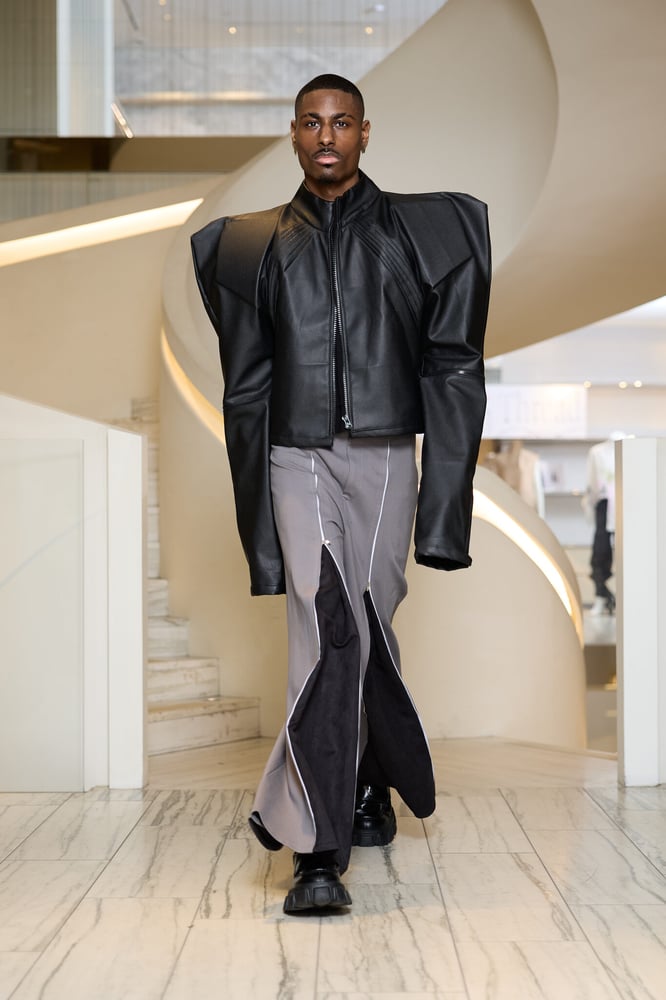
With the theme of “A Common Thread”—not to be confused with the Vogue and CFDA initiative during the pandemic—students essentially took the directive as a chance to display their most imaginative, fantasy driven fashions, with a noticeable departure from tailoring and traditional ready-to-wear that was much more prevalent in last years presentation.
Considering that fashion reflects the times, it’s safe to say this year’s grads had both escapism and protectionism in mind when creating their pieces. Connection to the earth using natural state materials, sustainability, and upcycling methods was also front and center.
With a lineup of over 200 different designers each showing one look, to expedite the production, like-minded designs were grouped. Thus, an opening group spoke to a post-apocalyptic reality with one student’s work bearing clothing with built-in backpacks for a literal “go-bag” jacket style, paired with pants with equal storage capabilities. Further on in the show, a black and white Victor-Victoria look featured a flat plane divider on one shoulder, separating the idea.
Intricately wound and twisted rope designs patched together forming a long train on one skirt managed artisanal craft and modernity in one, Air circulated through one see-through blow-up plastic jacket while another exit featured a Hello Kitty-esque mask slash hat. Several styles referenced 18th- and 19th-century garb, reimagined for today or perhaps as a nod to specific current global issues harkening back to those eras. To wit, one take on a robe Anglaise in red seemed to imagine a handmaid’s outfit, about our backward social agenda.
What’s clear about this generation that has learned to create with the help of 3D printing is that many of the interviews they will go on will be with working creatives, yet to explore how it can transform clothing.
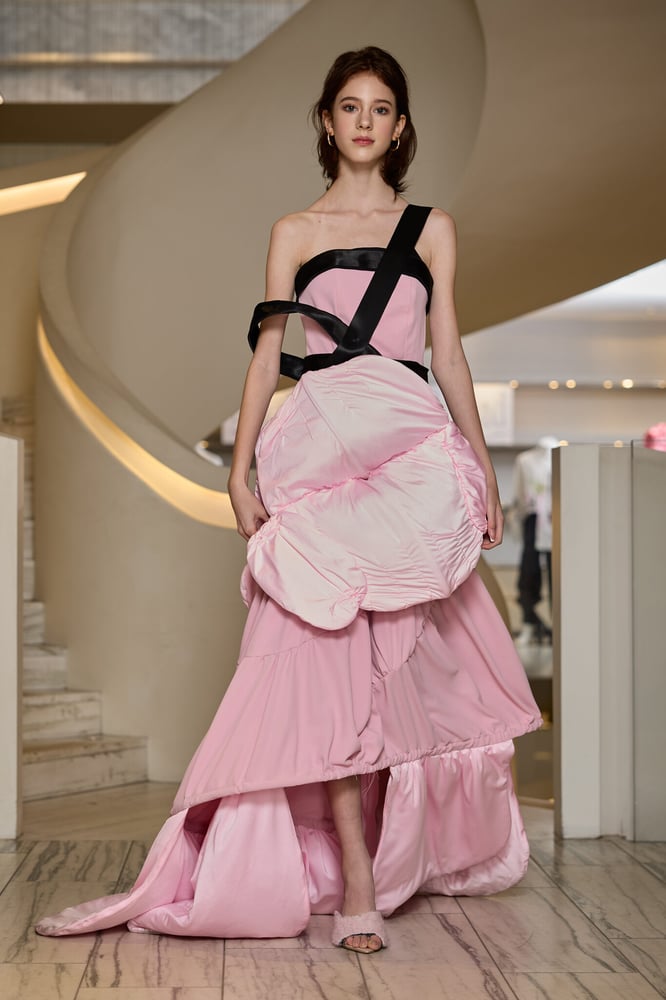
While students each put a unique, skilled, and educated spin on their design creativity, pairing a potential design house they would gel with was interesting. Comme des Garçons, Marc Jacobs, Issey Miyake, and Jonathan Anderson for Loewe seemed to draw the most inspiration.
Copyright © 2025 FashionNetwork.com All rights reserved.
